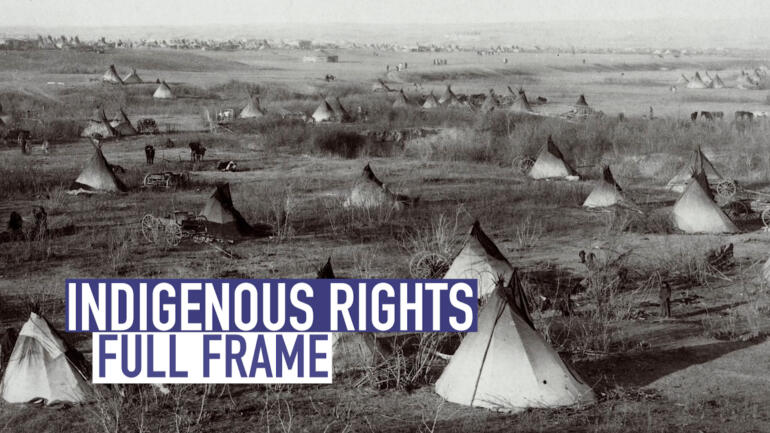Despite their differences, indigenous people around the world have faced similar problems – Violence, social inequalities, and threats to their way of life and traditional lands.
In the United States, American Indians and native Alaskans make up more than 2 percent of the population, a diverse group of 574 federally recognized tribes. This group is disproportionately affected by poverty and health disparities, including mental health conditions. Providing indigenous youth more opportunities is one way of fighting those disparities.
“Native youths understand intricately the cultural connection that we have to land and the power of place and how that connects us to our ancestors and the ones that walk before us,” said Nikki Santos, the executive director at the Aspen Institute’s Center for Native American Youth, in an interview with Full Frame host Mike Walter. “And so when young people talk to us about mental health, they talk about the need to have better health care systems, doctors that are informed on traditional plants and medicines. They know the solutions to combat suicide that they’re seeing with their peers and their community and ideation that they may even feel in themselves.”
Santos has written and talked about how the U.S. media often overlooks Native votes in their election projections. But these voters have been key in elections, especially in swing states and states with large Native populations.
“Civic engagement happens year round, whether it’s mobilizing your community to get a mural that talks about an issue that they care about, or getting folks to the polls, getting people to vote… And so we’re really proud to work alongside Native Americans to ensure that they are also empowered and engaged civically,” she said.
Raising awareness about historic abuses
In the United States, new investigations into Indian boarding schools revealed shocking details. A 2022 report by the U.S. Department of the Interior found that at least 500 children died at these schools, but the actual death toll could be in the tens of thousands.
But long before this report, Native American activists have been shedding light on these injustices, as they remembered the children who died.
Roberta Ecoffey survived her boarding school, but some of her family members were not as lucky. Ecoffey said the schools erased her language and any knowledge of her culture.
“They don’t only just take your mind, but they took your soul too. We weren’t able to practice our religion. We weren’t able to practice this way of live,” she said.
The full extent of the damage done by these schools is still not clear. Intergenerational trauma and the continued cultural loss are felt today, says Elizabeth Rule, assistant professor at American University.
“It’s tribes that are taking the initiative to do that work, to repatriate their ancestors, to make sure that those children come home, that they receive a proper burial, that their families are notified and informed,” she said.
Fighting a legacy of colonialism
In Greenland, the indigenous Inuit make up nearly 90 percent of the population, yet the country is part Denmark. Inuk activists argue that the legacy of colonialism has led to systemic racism against the Inuit, from joblessness and poverty, to lack of adequate housing and education.
“We have extremely high suicide rates and people keep looking into them, but never really giving an answer, maybe because the answer is too scary, and that is colonization. We don’t even have a word for colonization in Greenland,” said Qivioq Lovstrom, chair of the Human Rights Council of Greenland and a lecturer at the University of Greenland. She has represented Greenland at the UN, EU and other international meetings.
Lovstrom said putting more indigenous leaders in positions of power will result in “a place where people feel more equal amongst each other” that also respects the environment.
“We will actually feel democracy is working because that is what our values as indigenous people usually are based on,” She said. “And it’s always nature first, because nature is us and we are nature. And that is what the rest of the world is realizing. We forgot it for a moment, but we’re getting there.”
 CGTN America
CGTN America
